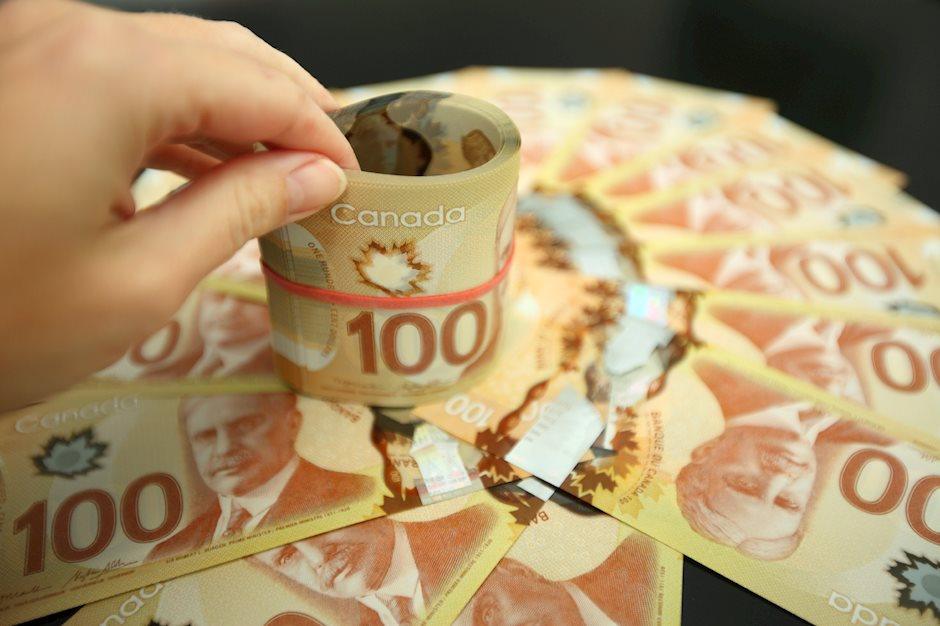EUR/CAD drops to near 1.5150 despite a dovish BoC, lower Oil prices
- The downside of the EUR/CAD cross would be retrained due to the dovish mood surrounding the BoC.
- Canada's Consumer Price Index eased to 2.5% YoY in July, which has marked the slowest increase since March 2021.
- ECB officials adopt caution about committing to a rate-cut path amid inflation concerns.

EUR/CAD halts its gains, trading around 1.5130 during the European session on Wednesday. The Canadian Dollar (CAD) strengthens against its peers despite soft inflation data that supports a dovish stance from the Bank of Canada (BoC). Furthermore, the commodity-linked CAD managed to hold its ground, even as crude Oil prices declined. Given the fact that Canada is the largest Oil exporter to the United States (US).
Canada's Consumer Price Index (CPI) eased to 2.5% year-on-year in July, down from 2.7% in the previous month, aligning with market expectations. This marks the slowest increase in consumer prices since March 2021. Additionally, the closely watched BoC Consumer Price Index Core fell to 1.7% YoY, from the previous 1.9% reading, reinforcing dovish expectations for the Bank of Canada.
West Texas Intermediate (WTI) Oil price extends its losing streak for the fourth successive session, trading around $73.00 per barrel at the time of writing, amid hopes for a ceasefire in the Middle East. US Secretary of State Antony Blinken concluded a trip to the region aimed at facilitating a ceasefire in Gaza. Blinken, along with mediators from Egypt and Qatar, has raised hopes for a US "bridging proposal" that could narrow the gaps between the conflicting parties in the 10-month-old war, per Reuters.
The EUR/CAD cross received support as traders expect the European Central Bank (ECB) to gradually lower interest rates. However, ECB officials have been cautious about committing to a specific rate-cut schedule, given concerns that inflationary pressures might pick up again.
Traders are likely to observe Purchasing Managers Index (PMI) data from the Eurozone and Germany scheduled for release on Thursday. HCOB Composite PMI for the Eurozone is expected to report a 50.1 reading, falling short of the previous reading of 50.2 reading.
Euro FAQs
The Euro is the currency for the 20 European Union countries that belong to the Eurozone. It is the second most heavily traded currency in the world behind the US Dollar. In 2022, it accounted for 31% of all foreign exchange transactions, with an average daily turnover of over $2.2 trillion a day. EUR/USD is the most heavily traded currency pair in the world, accounting for an estimated 30% off all transactions, followed by EUR/JPY (4%), EUR/GBP (3%) and EUR/AUD (2%).
The European Central Bank (ECB) in Frankfurt, Germany, is the reserve bank for the Eurozone. The ECB sets interest rates and manages monetary policy. The ECB’s primary mandate is to maintain price stability, which means either controlling inflation or stimulating growth. Its primary tool is the raising or lowering of interest rates. Relatively high interest rates – or the expectation of higher rates – will usually benefit the Euro and vice versa. The ECB Governing Council makes monetary policy decisions at meetings held eight times a year. Decisions are made by heads of the Eurozone national banks and six permanent members, including the President of the ECB, Christine Lagarde.
Eurozone inflation data, measured by the Harmonized Index of Consumer Prices (HICP), is an important econometric for the Euro. If inflation rises more than expected, especially if above the ECB’s 2% target, it obliges the ECB to raise interest rates to bring it back under control. Relatively high interest rates compared to its counterparts will usually benefit the Euro, as it makes the region more attractive as a place for global investors to park their money.
Data releases gauge the health of the economy and can impact on the Euro. Indicators such as GDP, Manufacturing and Services PMIs, employment, and consumer sentiment surveys can all influence the direction of the single currency. A strong economy is good for the Euro. Not only does it attract more foreign investment but it may encourage the ECB to put up interest rates, which will directly strengthen the Euro. Otherwise, if economic data is weak, the Euro is likely to fall. Economic data for the four largest economies in the euro area (Germany, France, Italy and Spain) are especially significant, as they account for 75% of the Eurozone’s economy.
Another significant data release for the Euro is the Trade Balance. This indicator measures the difference between what a country earns from its exports and what it spends on imports over a given period. If a country produces highly sought after exports then its currency will gain in value purely from the extra demand created from foreign buyers seeking to purchase these goods. Therefore, a positive net Trade Balance strengthens a currency and vice versa for a negative balance.
Author

Akhtar Faruqui
FXStreet
Akhtar Faruqui is a Forex Analyst based in New Delhi, India. With a keen eye for market trends and a passion for dissecting complex financial dynamics, he is dedicated to delivering accurate and insightful Forex news and analysis.

















